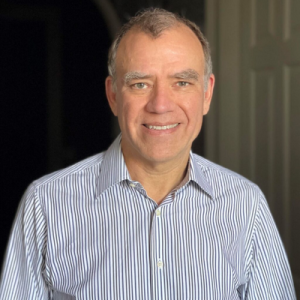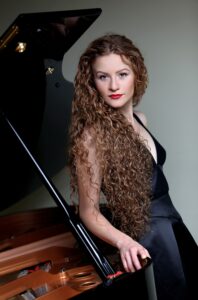All five of tonight’s Boston composers have a close association with this venue. John Williams is forever tied to the Esplanade, not only for his many years conducting the Boston Pops, but also because he is the only living composer among the eighty-eight whose names adorn the Shell in five-inch bronze lettering. Leonard Bernstein made his professional conducting debut here on July 11, 1941, leading the Pops. Florence Price drafted her First Symphony at the New England Conservatory, just up the road. Amy Beach lived around the corner at 28 Commonwealth Avenue, while John Harbison lives a couple miles upstream on the other side of the Charles.
The overall mood of Leonard Bernstein’s Candide is glee. True, the characters experience appalling misfortune at every turn: abduction; war; sex trafficking; earthquake; poverty; the loss of a buttock; and the imminent threat of being burned at the stake. But, in the spirit of Voltaire, the telling of this dreadful tale is all wit and hilarity. Think Monty Python’s “Always look on the bright side of life.”
The Overture is a medley of tunes from the show—as most Broadway overtures are—but it is built according to classical principles and in sonata form—as few Broadway overtures are. It begins with a four-note ascending fanfare in the brass and snare drum. This is the Westphalian Fanfare. Like the three-note whistle-call of the Jets that opens West Side Story, Bernstein makes use of the Fanfare throughout the show. A cheeky descending scale in woodwinds answers it, music the legendary philosopher Dr. Pangloss’s lessons in life:
Once one dismisses
The rest of all possible worlds,
One finds that this is
The best of all possible worlds.
The violins then launch the main theme, an aggressive “charge” from the battle of the Westphalian forces against the Bulgarian army. Strings and woodwinds exchange playful variants; the brass introduce a new martial figure; winds and xylophone respond exuberantly; and brass and timpani pound out the battle scene’s main march music. Further developments of the main theme settle into the cuddly duet of our young and perfectly happy pair, Candide and Cunegonde. “Oh, Happy We” has a nursery-rhyme catchiness about it:
Soon, when we feel we can afford it,
We’ll build a modest little farm.
We’ll buy a yacht and live aboard it,
Rolling in luxury and stylish charm.
The reprise of the opening music marks the overture’s Recapitulation. For the coda, Bernstein turns to “Glitter and Be Gay,” Cunegonde’s vainglorious answer to Gounod’s Jewel Song from Faust: “Ha! observe how bravely I conceal the dreadful, drea(head)ful shame I feel!” Then it’s back to the battle music; an outburst of “Oh, Happy We” from the horns; and one final joke: the last two bait-and-switch chords.
Tonight’s Suite for Orchestra includes three numbers from the show arranged for orchestra alone by Charlie Harmon, a Bernstein protégé. Bernstein’s Candide travelled almost as circuitous a route as the title character of Voltaire’s satiric novella. First conceived as a play with incidental music, it became in Bernstein’s mind a comic operetta, only to open on Broadway as a musical. The show then went through a dizzying series of revisions, including both severely reduced versions and expanded versions for the opera house.
Stylistically, Candide is a dizzying potpourri of musical types thrown into the Bernstein blender: waltz, polka, ländler, tango, gavotte, barcarolle, hornpipe, Hungarian march, Bachian chorale, Gounod-style showpiece, music for storms and earthquakes, instrumental battle scenes, and a Spanish Inquisition auto da fé for full chorus. All this suited Bernstein perfectly. Or more likely, he chose Voltaire’s satire in the first place because it gave him an opportunity to be all over the map.
Florence Price used a traditional European four-movement structure in all her symphonies. She also followed Dvořák’s lead in eschewing direct quotation of folk songs, instead imbuing her music with their rhythms and character. The European model dictated that one of the middle movements should be in a dance form. For Haydn, that meant a minuet; for Dvořák it often meant a Czech Furiant. It was the Juba Dance that filled this role for Florence Price.
In the traditional Juba, performers pat or slap parts of their bodies to keep time. Price knew the dance well from her childhood in Arkansas. Many of her works include Juba-inspired movements—as well as other African American folk influences—including all four of her symphonies. In its active footwork and strong syncopations, the Juba dance is a precursor to African-derived forms of American dance, including tap, jazz, and hip-hop.
Dr. Liane Curtis is President of Women’s Philharmonic Advocacy, a not-for-profit organization dedicated to “leveling the playing field” for women in classical music. In particular, Liane is an Amy Beach scholar and fan. In 1994, she led the effort by the Boston Women’s Heritage Trail to place a plaque on Amy Beach’s home at 28 Commonwealth Avenue. In 2000, she convinced Boston to pay further tribute to its native daughter by adding Amy Beach’s name to the facade of the Hatch Shell.
We are grateful to Dr. Curtis for her generous and joyous collaborations with the Landmarks Orchestra for many years. Tonight, she offers this note on the Concerto:
“Amy Beach turned to writing a piano concerto in 1898, following her remarkable successes in composing large-scale orchestral works including her Mass, op. 5, premiered by the Handel and Haydn Society in 1892, her Festival Jubilate, op. 17, for chorus, vocal soloists, and orchestra, which was performed at the Colombian World’s Exposition in Chicago in 1893, and her Symphony in e minor, op. 32, “Gaelic,” premiered by the Boston Symphony Orchestra in 1896. Beach had been a noted child prodigy on the piano, and these impressive works brought her to light as a national and even international leader in composition. She wrote this work in her second-floor music room in her home at 28 Commonwealth Avenue, just a few short blocks from tonight’s venue.
“In writing this Concerto, Beach gave herself a vehicle to express her largest and most powerful musical ambitions – both as a composer and a pianist. It showcases her virtuosity and artistry, but also expresses her grief, recognizing the sacrifice she had made when her husband Dr. H.H.A. Beach limited her career as pianist, according to prevailing social decorum; she was allowed only two public performances a year; no touring, and any proceeds to go to charity. The Concerto reveals her fiery determination to overcome that loss of musical outlet, and to create a spectacular place for herself onstage at the piano. It is, to use her own phrase, “a veritable autobiography,” a response to “the most terrific onslaught upon all that was deepest in [one’s] life.” (This interpretation is drawn from the biography by Adrienne Fried Block.)
“It was often Beach’s practice to draw from her own songs, expanding the small gems into expansive musical canvases; in the Concerto, she drew from three of her songs written around the time of her marriage in 1885; these borrowed songs dating more than a decade earlier, reveal the background layers of emotion present in the Concerto.
“The opening movement, Allegro moderato, is by far the longest. Beach draws from her setting of a French poem, about a father at the grave of his young daughter, Jeune fille et jeune fleur, (op. 1, n. 3). The dark key of c-sharp minor and the somber mood are both shared with the song. The Concerto begins with a brooding and portentous opening, and the piano entrance is a bold and dramatic declaration. The gentler, poignant second theme draws its angular melody from the stanza of the song setting the words “Tu dors, pauvre Elisa” (you sleep, poor Elisa), stated first in the piano, and then again by a solo violin; during the development this theme is exchanged by a range of instruments. We might see it as a metaphor for the much older Dr. Beach burying the pianistic aspirations of his youthful bride.
“The second movement, Scherzo: Vivace (Perpetuum mobile), in A major, builds energetically on Beach’s song “Empress of Night,” op. 2 n. 3, setting a poem by her husband, about the beauty of the moonlight sparkling over a wintry landscape. The piano has an unending stream of sixteenth-notes, winding like a playful filigree around the smooth, flowing melody of the orchestra.
“And in the gloomy third movement, (Largo) the mood is cast by the borrowed song “Twilight” (setting a poem written by her husband) about a foreboding night landscape, with the clarinet introducing the evocative melody, which the piano builds on with tragic intensity. This is at last thrown off, when “morn brings life to all,” and the movement segues into the vivacious last movement — Amy has broken through her darkness and gloom, and the light dawns with energy and nimbleness (the tempo marking is Allegro con scioltezza) as she overcomes the obstacles of her life and brilliantly fulfills her musical destiny. The Largo does make a brief re-appearance, with a solo cello joining the piano. The piano returns with exuberant energy and the dazzling cascades of notes, overpowering the orchestra, are Amy Beach’s celebration.
“Beach premiered the Concerto herself with the Boston Symphony Orchestra led by Wilhelm Gericke, on April 7, 1900. She dedicated the work to the noted Venezuelan soloist Teresa Carreño, probably in hopes that Carreño would take it up in her repertoire. While Carreño never performed the work, she did write positively to Beach about it. Following the death of Dr. Beach in 1910, Amy Beach made her first trip to Europe from 1911 to 1914, performing the concerto several times in Germany. On her return to the US, she received multiple engagements to play the Concerto, including a second performance with the BSO in 1917.”
John Harbison’s many musical passions include the orchestra itself. When the Boston Symphony performed all six of his symphonies over the course of two seasons in 2010–12, it revealed music of immense imagination by a creator completely at home with such a virtuoso ensemble. It was also a welcome chance for Bostonians to salute a man who has lifted our musical world in countless ways through his roles as composer, conductor, pianist, teacher, and generous and enthusiastic champion of his colleagues.
The composer writes, “Rubies is a version of Thelonious Monk’s “Ruby My Dear,” which he composed while still in his teens. When I was invited by Seattle Symphony to make a short piece reflecting my first musical passions my thoughts were of Bach and Monk. Since I had recently made some Bach-like chorale preludes, I chose to make a version of Monk’s tune, first in a chamber-musical, contrapuntal manner, then in the grand orchestral style I had always heard lurking there.
John Williams was born in Queens and first made his musical career in Los Angeles, but his father “was a Maine man,” he has written. “My mother was from Boston. My father’s parents ran a department store in Bangor, Maine, and my mother’s father was a cabinetmaker.” He has long since been claimed by the City of Boston as one of the most revered leaders in this city’s history. Williams’s career spans seven decades. He has won five Academy Awards and twenty-six Grammys. His fifty-four Academy Award nominations are the second most in history. Only Walt Disney has more.
 CHRISTOPHER WILKINS was appointed Music Director of the Boston Landmarks Orchestra in the spring of 2011. Since then, he has expanded the orchestra’s mission of making great music accessible to the whole community. He has also helped develop the orchestra’s Breaking Down Barriers initiative, making accessibility a priority in all aspects of the orchestra’s activities.
CHRISTOPHER WILKINS was appointed Music Director of the Boston Landmarks Orchestra in the spring of 2011. Since then, he has expanded the orchestra’s mission of making great music accessible to the whole community. He has also helped develop the orchestra’s Breaking Down Barriers initiative, making accessibility a priority in all aspects of the orchestra’s activities.


